Debra H. Goldstein's Blog, page 29
May 9, 2016
Guest Blogger Heather Weidner: How Much of Your Fiction is True?
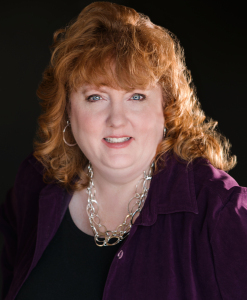 How Much of Your Fiction is True? by Heather Weidner
How Much of Your Fiction is True? by Heather Weidner
Recently, I was asked if any of my mysteries are based on real events or contained real people. I do mix in some real life in my short stories and novels. All of my city settings are actual places. I tend to set my works in Virginia locales. If a crime occurs, I make up that location’s name. I wouldn’t put a horrific event at a real restaurant or store. But if you’ve been to the cities, you’ll recognize landmarks and street names.
Sometimes, I get ideas for crimes and capers from real cases, but I usually take liberties with the details. In my short story, “Washed up,” (Virginia is for Mysteries 2014) a beat up suitcase washes up on Chick’s Beach, and it’s filled with some mysterious contents. Back in the ‘80s, there was a real case where suitcases filled with body parts did wash up on beaches along the East Coast. In my story, I thought it would be interesting for beachgoers to find something old and sinister in an unexpected place.
For some of my characters, I blend characteristics of several real people to make a fictional person. And phrases that family and friends say frequently appear in my stories. I have two co-workers who keep asking me to make them villains. I haven’t done that yet, but I do hint from time to time that unruly team members will end up in a dumpster in a future story.
I carry a notebook with me wherever I go and always jot down names and interesting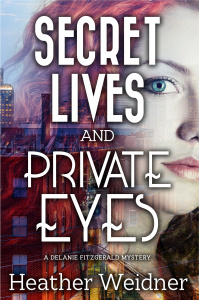 tidbits that might one day make their way to a story. I use friends and family member’s names for minor characters. In Secret Lives and Private Eyes (June 2016), my sleuth, Delanie Fitzgerald, gives herself all kinds of aliases during her investigations. These are usually names of friends and family. And every once in a while, you’ll find police, EMTs, or FBI agents named after my favorite authors, rock stars, or actors. Delanie Fitzgerald is named for F. Scott Fitzgerald, and her company, Falcon Investigations, is in honor of Dashiell Hammett’s The Maltese Falcon.
tidbits that might one day make their way to a story. I use friends and family member’s names for minor characters. In Secret Lives and Private Eyes (June 2016), my sleuth, Delanie Fitzgerald, gives herself all kinds of aliases during her investigations. These are usually names of friends and family. And every once in a while, you’ll find police, EMTs, or FBI agents named after my favorite authors, rock stars, or actors. Delanie Fitzgerald is named for F. Scott Fitzgerald, and her company, Falcon Investigations, is in honor of Dashiell Hammett’s The Maltese Falcon.
I did have an odd author moment when a woman with the same name as one of my main characters followed me on Twitter. It was a fun surprise.
Even though mysteries are fiction, a great deal of research goes into the project to get the details right and to make it plausible. And surprisingly, there can be quite a lot of truth in fiction.
~ ~ ~ ~ ~
Heather Weidner’s short stories appear in Virginia is for Mysteries and Virginia is for Mysteries Volume II. Currently, she is President of Sisters in Crime – Central Virginia, and a member of Guppies and Lethal Ladies Write. Secret Lives and Private Eyes is her debut novel.
Originally from Virginia Beach, Heather has been a mystery fan since Scooby Doo and Nancy Drew. She lives in Central Virginia with her husband and a pair of Jack Russell terriers.
Follow Heather at www.heatherweidner.com and on Facebook, Twitter, Instagram, and Goodreads.
Secret Lives and Private Eyes Synopsis
Business has been slow for Private Investigator, Delanie Fitzgerald, but her luck seems to change when a tell-all author hires her to find rock star, Johnny Velvet. Could the singer whose career purportedly ended in a fiery crash almost thirty years ago, still be alive?
And as though sifting through dead ends in a cold case isn’t bad enough, Chaz Wellington Smith, III, a loud-mouthed, strip club owner, also hires Delanie to uncover information about the mayor’s secret life. When the mayor is murdered, Chaz, is the key suspect. Now Delanie must clear his name and figure out why landscaper Tripp Payne, keeps popping up in her other investigation. Can the private investigator find the connection between the two cases before another murder – possibly her own – takes place?
Secret Lives and Private Eyes (June 2016) is a fast-paced mystery that will appeal to readers who like a strong, female sleuth with a knack for getting herself in and out of humorous situations.


April 18, 2016
Guest Blogger: Susan Van Kirk – Benjamin Franklin’s Contribution to My Mysteries
Benjamin Franklin’s Contribution to My Mysteries by Susan Van Kirk
Thanks, Debra, for allowing me to check in with your readers today.
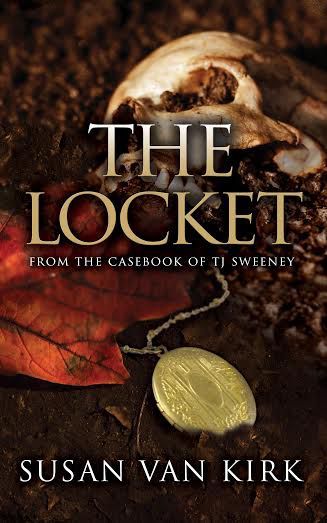 I broke the string of titles this week with the launch of a novella about my detective who has a strong role in my Endurance mysteries. Oh, I know Ben Franklin is probably disappointed that I didn’t use one of his proverbs this time, but my novella is also a break in a string of full-length novels.
I broke the string of titles this week with the launch of a novella about my detective who has a strong role in my Endurance mysteries. Oh, I know Ben Franklin is probably disappointed that I didn’t use one of his proverbs this time, but my novella is also a break in a string of full-length novels.
The first of my mystery series is called Three May Keep a Secret, and it came out from Five Star/Cengage in December, 2014. (At this point, I’m sure you’re continuing the title in your head with the rest of the proverb: “if two of them are dead.”) My main character is a retired English teacher and likes Franklin’s sayings. He was a master of borrowing proverbs from other writers and slapping his name on them, or designing his own aphorisms about human nature.
This first novel introduced the small town of Endurance and its inhabitants. Grace Kimball, recently retired teacher, finds herself in the middle of a murder investigation when she takes over a part-time newspaper job from a murdered reporter. Unfortunately, with that job comes lots of secrets from the town’s history, and one of them throws Grace right in the gun sights of a killer.
Jeff Maitlin, who recently moved to town to run the newspaper, is Grace’s “love interest,” but, frankly, he is a suspicious character himself. After he moves to town, people begin dying unexpectedly. Is he involved? Or is his mysterious past just that—something better left behind him? TJ Sweeney, local detective and Grace’s friend, is very leery of this guy. Is he carrying out Ben Franklin’s title, or is he innocent in at least two murders?
The second novel in the series, Marry in Haste, will be out in November from Five Star/Cengage. That Franklin proverb ends with “Repent at leisure.” This book is the story of two marriages, and from that title I’m sure you can figure out how happy they were. The lovely surprise is that these marriages were a century apart. One plot is from 1893, the other from the present day, and both involve a mysterious death. Domestic violence is the topic, but the plot does not use graphic violence. I was more interested in how attitudes and laws have changed over a hundred years, and how this subject affects people psychologically.
The third novel, not yet published, is called Death Takes No Bribes. This time Ben Franklin didn’t follow it up with another phrase because his proverb is self-explanatory. The high school principal, known throughout town as a good man, is found dead at the beginning of the story, and why would Death take someone who was such a role model? Soon it becomes clear that appearances do not always reflect reality.
I’ll bet Ben Franklin could say a thing or two about that.
Franklin left so many wonderful proverbs, mostly published in his Poor Richard’s Almanac(s). I have scratched my head trying to figure out how to use some of them as mystery titles. Here are a few examples:
Fish and visitors smell in three days.
If your head is wax, don’t walk in the sun.
He that lieth down with dogs shall rise up with fleas.
He that composes himself is wiser than he that composes books. (What?)
Hunger is the best pickle.
So is it any wonder that when I decided recently to write a novella, I dispensed with the Benjamin Franklin titles temporarily? The Locket: From the Casebook of TJ Sweeney is the first of a possible spin-off series about my detective. It just launched as an e-book on Amazon.
After solving a double homicide in the hot Midwest summer, Endurance police detective TJ Sweeney isn’t given long to rest. A construction crew has found human bones while digging a building foundation on the outskirts of town.
Sweeney’s investigation soon concludes this was a murder victim, but from many decades earlier. Readers are treated to a wonderful walk with Sweeney through the big band era and the early years of WWII. Trying to identify the remains and put a name on the killer takes the detective through a maze of dead ends and openings, twists and turns.
And then it becomes personal …
I’m starting to think about titles for the next novel. Possibly, “Love your neighbor, yet don’t pull down your hedge”? Grace lives in a small neighborhood on Sweetbriar Court. Hmmm. Lots of possibilities for squabbles over property lines …
So, readers, what are some of your favorite Franklin proverbs?
~ ~ ~ ~ ~
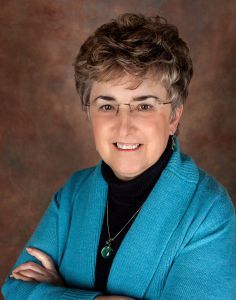
Susan Van Kirk is the author of a nonfiction memoir, The Education of a Teacher (Including Dirty Books and Pointed Looks.) Her Endurance mysteries are published by Five Star/Cengage and include Three May Keep a Secret and Marry in Haste (Nov. 2016). The Locket: From the Casebook of TJ Sweeney is on Kindle from Amazon. She is a member of Sisters in Crime and its Guppy Chapter, and also Mystery Writers of America. While she is often visiting her children in the Phoenix/Scottsdale area, she can also be found at home in a small town in the middle of Illinois. Visit her website at www.susanvankirk.com


April 4, 2016
Guest Blogger Judy Penz Sheluk: Creating a Fictional Town
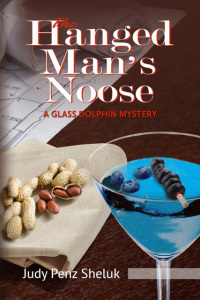 Creating a Fictional Town by Judy Penz Sheluk
Creating a Fictional Town by Judy Penz Sheluk
Agatha Christie was the master of creating atmosphere and place, whether she was at the English seaside, or solving a murder in Mesopotamia. I’ve never been to Minnesota, but when I sit down to read the latest John Sandford novel, I feel as if I’m returning to familiar territory. And anyone who’s read Louise Penny has visited Three Pines, even though it’s a fictional town in Quebec. So when I started writing The Hanged Man’s Noose, I wanted the book to be set in Canada, more specifically, a small town north of Toronto, Ontario. The town would be fictional, but there would a basis for the setting, places that were familiar to me.
At the time, I was living in Holland Landing, a small community in the town of East Gwillimbury, about 35 miles north of Toronto. There isn’t a lot of industry in the Landing, unless you count a couple of local diners, pizzerias, convenience stores and the like, but the neighboring town of Newmarket has a lovely revitalized Main Street filled with indie shops and restaurants, and there’s a nice park at the end of it, complete with a large pond called Fairy Lake. What both East Gwillimbury and Newmarket have in common is growth. In recent years, farmlands and forests have been razed for housing developments and big box stores, with much more planned.
Such growth does not come without contention. We tend to forget that our own homes often sit on plots of land that were once forests and farms. But reading about the latest plans, listening to the groups hotly opposed, gave me the first germ of an idea. What if a greedy developer from Toronto came to a small town with plans to build a mega-box store on the town’s historic Main Street?
That’s the premise behind The Hanged Man’s Noose, the first in the Glass Dolphin mystery series, although the plot does thicken considerably. One reviewer (Jack Batten, WHODUNIT, The Toronto Star) wrote, “In her first book, Toronto writer Judy Penz Sheluk probably scores a record for the most characters with skeletons in the closet … even the sleuth figure, an investigative reporter, guards a personal mystery in a book whose author hits large in the business of concocting secrets.”
I decided to merge Newmarket and East Gwillimbury, borrowing a bit from each, and embellishing a lot. I wanted this to be the sort of idyllic town I’d like to live in. Naming my fictional town was easy: outside the Holland Landing Library and Community Centre, there is a plaque dedicated to Samuel Lount, a 19th century politician who had lived in the Landing, but had the misfortune of being hanged for treason.
there is a plaque dedicated to Samuel Lount, a 19th century politician who had lived in the Landing, but had the misfortune of being hanged for treason.
What could be more perfect for a mystery than a town named after a traitor? Lount’s Landing was born, and along with it, a historic Main Street that includes the Sunrise Café (suspiciously similar to the now-closed Sunshine’s Café in the Landing), and the Glass Dolphin antiques shop, from which the series gets its name. The title of the book comes from name of the local pub, The Hanged Man’s Noose (the owner is a bit of a history buff).
Once I had my town, it was time to populate it with characters. But that’s a story for another day. I invite you to read the first three chapters free at http://barkingrainpress.org/hanged-mans-noose/http://barkingrainpress.org/hanged-mans-noose/. If I’ve done my job, you’ll want to read more. If so, you can find it in trade paperback and eBook at all the usual suspects, including Amazon and Barnes & Noble.
~ ~ ~ ~ ~
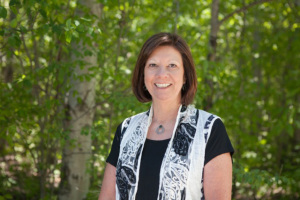 Judy Penz Sheluk’s debut mystery, The Hanged Man’s Noose: A Glass Dolphin Mystery, was published July 2015 by Barking Rain Press. Her short crime fiction is included in The Whole She-Bang 2, World Enough and Crime, Flash and Bang, and Live Free or Tri: a collection of three short mystery stories. Judy has also contributed to two multi-author cookbooks, Bake, Love, Write, and We’d Rather Be Writing.
Judy Penz Sheluk’s debut mystery, The Hanged Man’s Noose: A Glass Dolphin Mystery, was published July 2015 by Barking Rain Press. Her short crime fiction is included in The Whole She-Bang 2, World Enough and Crime, Flash and Bang, and Live Free or Tri: a collection of three short mystery stories. Judy has also contributed to two multi-author cookbooks, Bake, Love, Write, and We’d Rather Be Writing.
Judy is a member of Sisters in Crime, Crime Writers of Canada, International Thriller Writers, and the Short Mystery Fiction Society.
In her less mysterious pursuits, Judy is the Senior Editor for New England Antiques Journal and the Editor of Home BUILDER Magazine.


Creating a Fictional Town by Judy Penz Sheluk
Agatha Chri...
 Creating a Fictional Town by Judy Penz Sheluk
Creating a Fictional Town by Judy Penz Sheluk
Agatha Christie was the master of creating atmosphere and place, whether she was at the English seaside, or solving a murder in Mesopotamia. I’ve never been to Minnesota, but when I sit down to read the latest John Sandford novel, I feel as if I’m returning to familiar territory. And anyone who’s read Louise Penny has visited Three Pines, even though it’s a fictional town in Quebec. So when I started writing The Hanged Man’s Noose, I wanted the book to be set in Canada, more specifically, a small town north of Toronto, Ontario. The town would be fictional, but there would a basis for the setting, places that were familiar to me.
At the time, I was living in Holland Landing, a small community in the town of East Gwillimbury, about 35 miles north of Toronto. There isn’t a lot of industry in the Landing, unless you count a couple of local diners, pizzerias, convenience stores and the like, but the neighboring town of Newmarket has a lovely revitalized Main Street filled with indie shops and restaurants, and there’s a nice park at the end of it, complete with a large pond called Fairy Lake. What both East Gwillimbury and Newmarket have in common is growth. In recent years, farmlands and forests have been razed for housing developments and big box stores, with much more planned.
Such growth does not come without contention. We tend to forget that our own homes often sit on plots of land that were once forests and farms. But reading about the latest plans, listening to the groups hotly opposed, gave me the first germ of an idea. What if a greedy developer from Toronto came to a small town with plans to build a mega-box store on the town’s historic Main Street?
That’s the premise behind The Hanged Man’s Noose, the first in the Glass Dolphin mystery series, although the plot does thicken considerably. One reviewer (Jack Batten, WHODUNIT, The Toronto Star) wrote, “In her first book, Toronto writer Judy Penz Sheluk probably scores a record for the most characters with skeletons in the closet … even the sleuth figure, an investigative reporter, guards a personal mystery in a book whose author hits large in the business of concocting secrets.”
I decided to merge Newmarket and East Gwillimbury, borrowing a bit from each, and embellishing a lot. I wanted this to be the sort of idyllic town I’d like to live in. Naming my fictional town was easy: outside the Holland Landing Library and Community Centre, there is a plaque dedicated to Samuel Lount, a 19th century politician who had lived in the Landing, but had the misfortune of being hanged for treason.
there is a plaque dedicated to Samuel Lount, a 19th century politician who had lived in the Landing, but had the misfortune of being hanged for treason.
What could be more perfect for a mystery than a town named after a traitor? Lount’s Landing was born, and along with it, a historic Main Street that includes the Sunrise Café (suspiciously similar to the now-closed Sunshine’s Café in the Landing), and the Glass Dolphin antiques shop, from which the series gets its name. The title of the book comes from name of the local pub, The Hanged Man’s Noose (the owner is a bit of a history buff).
Once I had my town, it was time to populate it with characters. But that’s a story for another day. I invite you to read the first three chapters free at http://barkingrainpress.org/hanged-mans-noose/http://barkingrainpress.org/hanged-mans-noose/. If I’ve done my job, you’ll want to read more. If so, you can find it in trade paperback and eBook at all the usual suspects, including Amazon and Barnes & Noble.
~ ~ ~ ~ ~
 Judy Penz Sheluk’s debut mystery, The Hanged Man’s Noose: A Glass Dolphin Mystery, was published July 2015 by Barking Rain Press. Her short crime fiction is included in The Whole She-Bang 2, World Enough and Crime, Flash and Bang, and Live Free or Tri: a collection of three short mystery stories. Judy has also contributed to two multi-author cookbooks, Bake, Love, Write, and We’d Rather Be Writing.
Judy Penz Sheluk’s debut mystery, The Hanged Man’s Noose: A Glass Dolphin Mystery, was published July 2015 by Barking Rain Press. Her short crime fiction is included in The Whole She-Bang 2, World Enough and Crime, Flash and Bang, and Live Free or Tri: a collection of three short mystery stories. Judy has also contributed to two multi-author cookbooks, Bake, Love, Write, and We’d Rather Be Writing.
Judy is a member of Sisters in Crime, Crime Writers of Canada, International Thriller Writers, and the Short Mystery Fiction Society.
In her less mysterious pursuits, Judy is the Senior Editor for New England Antiques Journal and the Editor of Home BUILDER Magazine.


March 28, 2016
Guest Blogger Carolyn Mulford – Lookng at Your MS
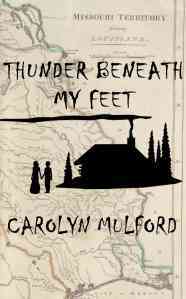 Looking at Your MS by Carolyn Mulford
Looking at Your MS by Carolyn Mulford
Writing a book is a long, hard slog. Typing the last word of the first draft brings a moment of exultation and an evening of celebration. I go to sleep confident the plot intrigues, the characters appeal, and the language delights.
The next morning reality hits. Knowing I will find countless imperfections as I rewrite 330 pages, I suffer an episode of the second-draft blues.
These blues aren’t unique to novelists. I discovered a low follows the first-draft high when writing feature articles for magazines. Working as a magazine editor, I confirmed that almost every writer shares my inability to read our own words objectively right after completing a draft and can’t judge what the rewrite will entail. I devised a visual assessment system, an objective way a writer or editor can judge what kind of work and how much a manuscript needs.
I adapted the system to novels years later while writing Show Me the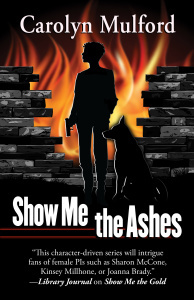 Murder, the first book in my mystery series featuring a former CIA covert operative who returns to Missouri. She solves rural crimes with two childhood friends. By the time I finished the draft of the just-released fourth book, Show Me the Ashes, I’d begun to share the system with other novelists.
Murder, the first book in my mystery series featuring a former CIA covert operative who returns to Missouri. She solves rural crimes with two childhood friends. By the time I finished the draft of the just-released fourth book, Show Me the Ashes, I’d begun to share the system with other novelists.
By following these three simple steps, a writer or editor can estimate how much work a first draft will need.
Riffle or scroll through your entire manuscript.
If pages look gray, expect long descriptions, info dumps, telling rather than showing. Lots of work to be done, including cutting and moving information.
Watch for long sections of dialogue or long sections without dialogue. An imbalance may signal a pacing or structural problem.
Turn through each chapter.
Do the same visual check as above.
Summarize the chapter’s action in one sentence. If nothing happens or half a dozen different things vie for attention, the chapter needs a rewrite, not an edit.
Read the end of the chapter to see if it propels the reader to the next chapter. If it doesn’t, you may need to end the chapter in a different place.
Read the opening to see if the reader who put down the book will be lost. Readers tend to stop at the end of a chapter and may not start the next chapter for days.
Look at each page.
If you see only two or three paragraphs, anticipate some rewriting.
Check the first word or phrase of each paragraph. If all or most paragraphs start the same way, you’ll be editing that page. Anticipate slow going.
Look for periods. If most sentences are long or the same length, prepare to edit. You’ve been using your eyes. Use your ears, too. Read aloud to check sentence structure, sound, emphasis, and rhythm.
Read the verbs.
The verbs alone should summarize what happens on that page. If they don’t, replace weak verbs. Look for forms of to be, verbs with modifiers, and passive voice. Strong verbs produce shorter, more dynamic sentences.
The visual assessment system won’t yield a comprehensive analysis of our first drafts, but it indicates how much we still have to do and guides us in the rewrite.
Using the system doesn’t prevent the second-draft blues.
~ ~ ~ ~ ~~~~~
Carolyn Mulford worked as a magazine editor and freelance writer on five continents before moving back to her home state of Missouri and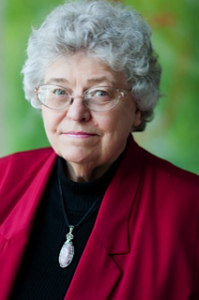 focusing on fiction. She writes the award-winning Show Me series, character-driven mysteries featuring three women: Phoenix Smith, a former spy who adapts her tradecraft to solve crimes in her hometown; Annalynn Keyser Smith, a civic leader who becomes sheriff after her husband’s violent death; and Connie Diamante, a struggling singer who uses improv to extract information. Achilles, a K-9 dropout, serves on their team. The fourth book, Show Me the Ashes, came out in hardback and e-book March 16. Harlequin Worldwide Mystery will issue a paperback edition of the second book, Show Me the Deadly Deer, in June. Carolyn also writes historical novels for tweens and teens. Thunder Beneath My Feet, set during the devastating New Madrid earthquakes of 1811-1812, came out in February 2016. The first chapter of each book appears on Carolyn’s website: http://carolynmulford.com.
focusing on fiction. She writes the award-winning Show Me series, character-driven mysteries featuring three women: Phoenix Smith, a former spy who adapts her tradecraft to solve crimes in her hometown; Annalynn Keyser Smith, a civic leader who becomes sheriff after her husband’s violent death; and Connie Diamante, a struggling singer who uses improv to extract information. Achilles, a K-9 dropout, serves on their team. The fourth book, Show Me the Ashes, came out in hardback and e-book March 16. Harlequin Worldwide Mystery will issue a paperback edition of the second book, Show Me the Deadly Deer, in June. Carolyn also writes historical novels for tweens and teens. Thunder Beneath My Feet, set during the devastating New Madrid earthquakes of 1811-1812, came out in February 2016. The first chapter of each book appears on Carolyn’s website: http://carolynmulford.com.


March 7, 2016
Guest Blog: Virginia is for Mysteries – Volume II

Heather Weidner and Teresa Inge are blogging today about their experience coordinating the Virginia is for Mysteries anthology series.
Virginia may be for lovers, but to nineteen authors, Virginia is for Mysteries: Volume II. The anthology of nineteen short stories, set in and around the Commonwealth, features Virginia landmarks and locations such as Virginia Wine Country, the Poe Museum, Luray Caverns, Colonial Williamsburg, the Great Dismal Swamp, Nimrod Hall, the Barter Theater, and Mill Mountain, to name a few. The stories transport readers across the diverse backdrop of the Old Dominion to a unique and deadly landscape, filled with killers, crooks, and criminals.
Where did you all get the inspiration for Virginia is for Mysteries?
Teresa : Inspired by the state logo, Virginia is for Lovers, I brainstormed the idea of coordinating a Virginia based anthology with Sisters in Crime Central Virginia and Mystery by the Sea chapter members during Mystery Day at the Library of Virginia in 2011.
How did you market the anthology?
Heather : We held over 52 events and signings for the first anthology, and we have quite a few events planned for Volume II for 2016. We have a website, blog, Facebook page, and a Twitter account. Our authors blog and post regularly about their stories, Virginia locations, and writing. We have been part of events in Virginia, Maryland, and North Carolina.
How did you find a publisher?
Teresa : Based on the suggestion of Jayne Oremod, a Virginia is for Mysteries author, I contacted Koehler Books about publishing the anthology. When Koehler offered to publish the book, this became the icing on the cake – having a respected Virginia publisher on board.
This is your second in a series. Tell us about some of the opportunities you’ve had with these books.
Teresa: We’ve travelled across the state of Virginia participating in over 52 book signings, panel discussions, and writing sessions.
Heather: It has been such a pleasure to meet so many mystery fans and readers on this journey. My favorite moment was when we signed a copy for Dr. Hal Poe, a relative of the Father of the Mystery, at the Poe Birthday Bash in Richmond, Virginia.
Tell us about some of the challenges you’ve faced with an anthology.
Teresa: Working with multiple authors, schedules, and timelines can be a challenge. Since each author has valuable input about how to market and promote the series, finding a happy medium through brainstorming ideas is a plus for any anthology series.
Heather: We are fortunate to have so many talented writers as part of these projects. Sometimes, it’s a challenge to make decisions and plans when we’re spread out across the Commonwealth of Virginia. But our size is also our biggest asset. We have an incredible social media reach when we work together to promote the books.
What is one thing you would recommend to a group who wants to put together an anthology?
Teresa: Assign two book coordinators, a marketing coordinator and other book tasks to authors to ensure each author is involved and tasks are completed in a timely manner. It takes a village to coordinate a successful series.
Heather: Work with your planning team to define the rules and expectations up front. Everyone can’t do everything, but everyone can do something to promote the books. We are so much more successful when we work together.
To learn more about the Virginia is for Mysteries authors, check out the following links:
Website: http://virginiaisformysteries.com
Virginia is for Mysteries blog: http://www.virginiaisformysteries.com/blog/
Virginia is for Mysteries author bios: http://www.virginiaisformysteries.com/authors/
Facebook: https://www.facebook.com/VirginiaIsForMysteries/?ref=br_rs
Twitter: https://twitter.com/VaMysteries?lang=en

Teresa Inge
Teresa Inge grew up in North Carolina reading Nancy Drew mysteries. Today, she doesn’t carry a rod like her idol, but she hot rods. She assists two busy executives and is president of the Sisters in Crime Virginia Beach Chapter. Teresa is the author of “Shopping for Murder,” and “Guide to Murder” in Virginia is for Mysteries, “Fishing for Murder” in the FishNets anthology and has coordinated anthologies. Visit Teresa on Facebook, Twitter, and www.teresainge.com.
Teresa Inge’s Website: http://www.teresainge.com/
Heather Weidner
Heather Weidner has been a mystery fan since Scooby Doo and Nancy Drew. Originally from Virginia Beach, Heather lives in Central Virginia with her husband and pair of crazy Jack Russell terriers. When she’s not reading and writing, she enjoys kayaking, photography, and visiting the beach as much as possible. She is President of the Sisters in Crime, Central Virginia Chapter. Heather’s story “Washed Up” appeared in Virginia is for Mysteries. Her debut novel, Secret Lives and Private Eyes, will be published in May 2016. She writes the blog Crazy for Words and is a guest blogger for a variety of sites. Visit Heather on Facebook, Twitter, Instagram, and Goodreads.


February 22, 2016
Gearing Up
It’s coming! Will I survive? The hardcover version of Should Have Played Poker: a Carrie

New – April 20, 2016
Martin and the Mah Jongg Players Mystery already is available for pre-order, but on April 20, 2016 the print and e-book versions will launch. I’m excited and scared. I thought the hard work was over – after all, I wrote the book, but now I need to publicize it.
For a shy person who spent a lifetime as a judge deliberately flying under the radar, this is a daunting proposition. Consequently, I’ve been observing others to see if there is a persona I can adopt. Here’s what I’ve observed:
a) Master Promoter – so much in my face that I want to puke (not my style)
b) Promoting is Gauche – and that’s why nobody bought your books after your family and friends helped the first day along (enough said)
c) Calm, Kind, and All Over the Place – Where does Hank get all that energy from? Surely eating five crackers at a sitting isn’t the source. (Can’t be duplicated except the kindness)
d) Volunteer Persona – leaves no time for writing or personal work (can well understand that one)
e) Networker – relationship builder (good if combined with c and d but problematic with style a)
f) Nurturer – helps others (good when combined with elements of c, d, and e)
g) Stumbler – what will be will be, but I’ll try (a natural fit)
What I finally realized is that it isn’t the persona I adopt that is going to make a difference, but whether those of you who read Should Have Played Poker enjoy it and recommend it to your friends, family, bookgroups, social media groups and anyone else you can think of. I hope you find it a fun and easy read and more importantly, I hope you choose to read it. I may not have the persona for PR, but I relish making new friends. As the song goes, “Make new friends, but keep the old.” The same is true for those of you supporting me on this journey and those I will meet in the months ahead. Debra
P.S. I guess I should tell you that on May 3 from 5-7 p.m. at Little Professor Bookstore in Homewood, there will be a live signing where all royalties from books sold will be going to the YWCA of Central Alabama’s domestic violence program and Collat Jewish Family Service’s CARES dementia respite program. In fact, that’s the same scenario for any print or e-book purchased between now and May 30 from any source (if it is an Amazon purchase, forward a copy of your email purchase confirmation to DHG@DebraHGoldstein.com) . Thanks in advance.
http://www.amazon.com/Should-Played-Carrie-Players-Mystery/dp/1432831593/ref=sr_1_1?s=books&ie=UTF8&qid=1456181682&sr=1-1&keywords=should+have+played+poker


February 8, 2016
Guest Blogger Kathy Waller – Three Ways of Looking at Austin Mystery Writers or, Why I go to Critique Group
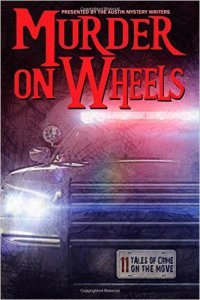 Three Ways of Looking at Austin Mystery Writers or, Why I Go to Critique Group by Kathy Waller
Three Ways of Looking at Austin Mystery Writers or, Why I Go to Critique Group by Kathy Waller
#1 Yesterday Dominica felt faint, and Molly, my protagonist, steered her to a bench on the courthouse lawn and then dithered over what to do. She couldn’t leave Dominica there to topple off the bench, but asking a passerby for help sounded lame, and there weren’t any passersby to ask. So there was poor Molly, needing more help than I could give her, stuck any way you looked at it. She stayed that way all night.
Today, talking about treatments for migraines, one of my critique partners took a bottle of peppermint oil from her purse and passed it around. At the first whiff, I said, “Molly suffers from migraines! She carries peppermint oil in her purse! She can use that to revive Dominica.”
In one fell swoop, I both saddled Molly with migraines and solved a knotty problem.
That is why I go to critique group.
#2 I said to my critique partners this morning, The whole project is stinky it stinks it’s just nothing no hope.
They said, But it’s so good so funny Molly is so funny it’s not stinky.
I said, Yes, the first part and the last part are funny and very very good but there’s still no middle and what there is stinks and anyway the other 5,000 words stink except for a few hundred here and there.
And they said, But the middle could be revised edited it has promise.
I said, But it won’t work because I have written myself into a hole and can’t get out so I have to trash that part and anyway the whole concept stinks.
And they said, NO you can fix it just keep going because we like Molly she’s so funny.
This is why I go to critique group.
#3 So I finally got things together with a beginning, a middle, and an end, and today my critique group said it was fine. But…
“Nobody died,” said Kaye.
“I know,” I said. “It’s li-ter-a-ry.”
“But it’s crime fiction,” said Gale. “Somebody has to die.”
Laura and Valerie, sitting on the other side of the table, nodded. In unison.
“I was going for subtlety,” I said. “It’s a death of the spirit.”
They stared at me. I stared back.
“Somebody has to die,” said Kaye.
Then all four said they didn’t understand the last line. I had written the entire story so I could use that line, and no one understood what it meant.
I kept staring and thought about words like philistines, peasants, and bourgeoisie.
Finally I spoke. I said, “Thank you.”
Then my friends began throwing out ideas for endings they liked, in each of which someone died. I sighed and said, Yeahhhh, and, Okayyyy, and, I guessss…
Gad, they were irritating, telling the truth like that. Especially the way they all kept agreeing. Especially since I’d known the ending was bad before I let them read it.
And then Kaye said, XXX—and I thought, YYY—and everything fell into place: I knew who would die, and how, and why, and what would happen next…
And I thought, Kaye has given me the perfect ending. All the suggestions are good, but hers works on multiple levels. It’s so right. Why didn’t I think of it myself?
And then I thought, Oh, who cares about why. What matters was that Kaye thought of it, and shared it, and that she and three other writers not only told the truth but grabbed me by the lapels and made me listen.
I rewrote the story, and it was published in Austin Mystery Writers’ crime fiction anthology, Murder on Wheels.
And that is why I go to critique group.
Every. Blessed. Week.
###
Kathy Waller’s A Nice Set of Wheels and Hell on Wheels appear in Austin Mystery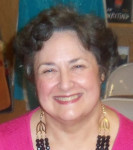 Writers’ crime fiction anthology Murder on Wheels (Wildside Press, 2015). A former librarian, former teacher, former paralegal, and former pianist for a string of churches desperate for someone who could find middle C, Kathy was born and reared in a small (pop. 150) town in Central Texas, and as a result nearly everything she writes includes a river, a cow, or a group of old ladies playing dominoes on someone’s front porch.
Writers’ crime fiction anthology Murder on Wheels (Wildside Press, 2015). A former librarian, former teacher, former paralegal, and former pianist for a string of churches desperate for someone who could find middle C, Kathy was born and reared in a small (pop. 150) town in Central Texas, and as a result nearly everything she writes includes a river, a cow, or a group of old ladies playing dominoes on someone’s front porch.


January 18, 2016
Guest Blogger Tracy Weber: A Perfect Place for Murder

Green Lake Park – A Perfect Setting for Murder
A Perfect Place for Murder by Tracy Weber
Seattle’s beloved Green Lake Park is my dog Tasha’s and my favorite walking and squirrel-prowling destination. So it was a natural setting for several pivotal scenes in Karma’s a Killer, my third Downward Dog Mystery.

Tasha, the real-life Bella watching the activities on Green Lake’s inner path
The three-hundred acre park contains grassy fields, a lake suitable for boating, a local community center, and a 2.8-mile walking path.
Like Bella, the 100-pound German shepherd in my series, Tasha enjoys exploring the diverse scents, diving after squirrels, and lying in the grass watching the other walkers go by.
I enjoy getting fresh air and exercise while scanning for wildlife, including turtles, squirrels, geese, raccoons, and blue herons.

One of Green Lake’s Blue Herons – can you spot his turtle friend?
In the summer, the area near the lake’s shore is smothered with lily pads; its surface, dotted by boats. The path around its circumference is crowded with thousands of locals who flock to it each day. What better place to plot murder!

Green Lake’s Ocean of Lily Pads
When yoga teacher/sleuth Kate Davidson agrees to teach a Doga (yoga for dogs) class at Greenlake, she has no idea that the area will soon be the site of a murder. In the excerpt below, Kate witnesses an argument between two women hidden behind a stack of paddleboats.

Scene of the Excerpt
Excerpt from Karma’s a Killer
Raven held up her hands. “Back off, Dharma. I don’t need your help, but I won’t stand for your insolence. I’m taking this place down with or without you. Trust me; these hypocrites at DogMa are going to burn.” Her voice turned low and threatening. “And if you get in my way, I might have to fry you, too.”
Dharma flinched and glanced warily over her shoulder. “Watch what you say, Raven. Someone might take you seriously.”
Raven snorted. “Yeah, well, maybe they should.”
Dharma’s mouth opened, but she didn’t respond, at least not at first. After several long, tense moments, she shook her head, almost sadly. “I’m sorry, Raven, but this has gone far enough. Eduardo talked me into coming on this ill-conceived road trip, but we never agreed to violence. I’m out.” She turned and started walking away. “We both are.”
“I wouldn’t be so sure about Eduardo.”
Dharma froze. Her entire body stiffened. When she slowly turned around, her expression was tight, as if her thinned lips and hardened eyes had been carved out of stone.
Raven’s lips lifted in a cruel-looking grin. She crossed her arms and leaned back against the paddleboats. “Sweetheart, you can leave any time. The sooner the better. I never wanted you here to begin with. But trust me, Eduardo’s not going anywhere. By the time I get done with him, he’ll be finished with you, too.”
The older woman exploded.
She howled and shoved Raven into the boats, using significantly more force than I would have expected from someone ideologically opposed to violence. Raven’s face hit the edge and she fell, splitting open her lower lip. Picket signs scattered in every direction.
Dharma scooped up a sign, snapped its wooden handle in two, and waved the jagged edges at her friend.
“I’m warning you, leave Eduardo alone, or you’ll be the one who burns.” She jabbed the wooden stake at Raven’s chest for emphasis. “In Hell.”
Raven’s response seemed more amused than frightened. She licked the blood from her lower lip, stood, and slowly clapped.
“Well done, Dharma. Well done. We’ll make an anarchist out of you yet.”
Dharma gaped at her hands, as if surprised to see them grasping a weapon. A strangled cry escaped from her throat. She took two large steps back, threw the broken sign to the ground, and stumbled away, sobbing.
~ ~ ~ ~ ~ ~
About Karma’s a Killer:
Yoga instructor Kate Davidson is about to discover that when it comes to murder, there’s no place like om. When she agrees to teach doga—yoga for dogs—at a fundraiser for Dogma, a local animal rescue, Kate believes the only real damage will be to her reputation. But when an animal rights protest at the event leads to a suspicious fire and a drowning, a few downward-facing dogs will be the least of Kate’s problems…
The police arrest Dharma, a woman claiming to be Kate’s estranged mother, and charge her with murder. To prove Dharma’s innocence, Kate, her boyfriend Michael, and her German shepherd sidekick Bella dive deeply into the worlds of animal activism, organizational politics, and the dangerous obsessions that drive them.
And if solving a murder weren’t complicated enough, Kate will also have to decide whether or not to reconcile with the estranged mother who abandoned her over thirty years ago. Not to mention having to contend with an almost-bankrupt animal rescue, a cantankerous crow, an unwanted pigeon houseguest, and a rabbit in a doga class. What could possibly go wrong?
~ ~ ~ ~ ~ ~

Tracy Weber – Author
Tracy Weber is the author of the award-winning Downward Dog Mysteries series. The first book in the series, Murder Strikes a Pose, won the Maxwell Award for Fiction and was nominated for the Agatha award for Best First Novel.
Tracy and her husband Marc live in Seattle with their challenging yet amazing German shepherd, Tasha. When she’s not writing, Tracy spends her time teaching yoga, walking Tasha, and sipping Blackthorn cider at her favorite ale house.
Karma’s a Killer is her third novel. For more information on Tracy and the Downward Dog Mysteries, visit her author website: http://TracyWeberAuthor.com/


December 28, 2015
Holiday Happiness vs. Happy Holidays by Debra H. Goldstein

Holiday Happiness. Happy holidays. One and the same? Not by a longshot.
The phrasing of “holiday happiness” and happy holidays” is the difference between a state of being versus a wish. Not everyone has the opportunity or the desire to experience either.
During the past the few weeks, everywhere I went, people told me “Happy Chanukah,” “Merry Christmas,” “Have a Happy New Year,” “Seasons Greetings,” or “Happy Holidays.” TV commercials advertised joyful times, products for sale, and also wished me some form of a “Happy Holidays.” Radio music, that began blaring on our local Christmas channel before Thanksgiving, set the stage and mood by having lyrics that sent a subliminal “Happy Holidays” message.
I got it. I participated. Even when I felt most Grinch like, I responded or automatically was the first to let one of these phrases roll from my lips. Why? Because no matter how one feels inside, one has been conditioned to share a prayer for others to have a “Happy Holidays.” It is the right thing to do. In fact, it is the only thing to do.
No matter how many times we say these words, they aren’t necessarily going to result in an individual experiencing “Holiday Happiness.” We hope it will, but we can’t count on it. The world and life isn’t always perfect. Parents, friends, and other family members may be ill, aging, or dying during this period of the year. Some people may be short of money, have problems with jobs, co-workers or lack of employment, and some are simply without the economic resources for food and shelter.
Like the wishes for “Happy Holidays,” words of platitude and caring are expressed. People make donations of food, money, and gift items in the hope of improving the holidays for others. Many feel good giving something that brings “Holiday Happiness” to others. Not only does it make a difference in the recipient’s life, but it warms the heart of the giver.
I am a realist. There have been years that I have felt the joy of “Holiday Happines” and other times where the holiday season has been meaningless. Last year was tinged by the loss of my mother. This year, with a book coming out in April and two stories published during the December holiday period, it has been an up time professionally. With anticipated weddings, visits to children, grandchildren and granddogs, and other planned trips with family and friends, I look forward to an exciting and wonderful 2016 for my loved ones and me.
Not all of you who read this message will experience the perfect definition of “Holiday Happiness,” but at least I can wish and pray for it for you. May the remainder of the holiday season and the upcoming year be one of health, happiness and prosperity. “Happy Holidays!”





